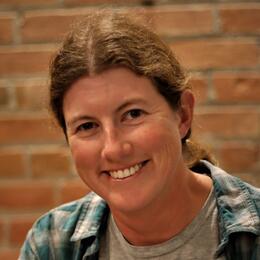If you had to count sea turtles, how would you do it? Since they spend their lives at sea and lay more than one nest in a year, they are hard to count and simply summing the number of nests per year is not accurate. So scientists in North Carolina, South Carolina, and Georgia are collecting DNA samples from eggs deposited by nesting females in order to link nests to unique individuals. The three states make up a population that is distinct from loggerheads in Florida and elsewhere, and determining how many individuals make up the nesting population will help assess the population's health and, over the long term, answer other questions.
Seaturtle.org contains nesting data from all North Carolina beaches, including Lea-Hutaff Island, which is monitored by Audubon North Carolina. The results of DNA testing on seven of the eight 2012 Lea-Hutaff Island nests have found that five individual females are responsible for those nests. Some of them also nested on Figure 8 Island and Topsail Island. Female loggerhead sea turtles nest more than once in a season, but one Lea-Hutaff female outdid herself: she was responsible for a total of seven nests in 2012!
One sea turtle nested seven times, once on Lea-Hutaff and six times on Figure 8 Island. Data courtesy of seaturtle.org.
Tagging studies have found that loggerheads don't nest every year, but how often they nest--every two years? every three? more?--is not as precisely known because nesting females must be intercepted while they are on the beach in order for their tags to be read and not all beaches are monitored at night.
The DNA samples obtained from a single egg taken from each nest will help determine more about nesting intervals, as well as how many beaches a single female uses during nesting, how accurately they return to the beaches where they were hatched, and how many nests a female lays in a year. But, the most valuable information, for the conservation of the species, will be an assessment of the total nesting population, which can then be monitored over time and, hopefully, see increases over the years.




